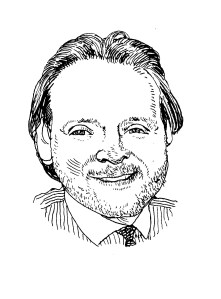
The land/development-site market in New York City is one of the most difficult to figure out. The perception is that land values plummeted during the peak of the recession, in 2009, and that value increased in 2010 as the market started to comeback. The sales data, however, reflects a very different story.
The 2009 land market experienced a severe decline in the number of sale transactions due to challenging financing markets and conservative underwriting by developers. Interestingly, this reduced number of sales produced surprisingly strong average prices per buildable square foot. While 2010 data was erratic submarket to submarket, it generally shows reductions in value per buildable square foot in 2010 compared with that of 2009.
Moreover, average prices per square foot stayed relatively high throughout this market cycle. If land had a true economic value (as opposed to the value reflected in the small number of transactions that did occur) well below sellers’ expectations, it did not trade. Sellers were simply not capitulating to what developers could afford to pay.
Therefore, a number of development sites were purchased by “user buyers”–those who bought the land to build a facility for their own occupancy. This dynamic kept average prices high even while volume dropped dramatically.
In 2010, we saw the number of development-site transactions citywide increase 22 percent, from 65 in 2009 to 79 in 2010. More remarkably, we saw the dollar volume of transactions more than double, reflecting an increase of 149 percent, from $372 million in 2009 to $928 million in 2010.
This increase in activity was very positive for the market; however, we saw price per buildable square foot decrease in four of the five submarkets we track. This was due to the fact that fewer of the sales were purchased by users and a greater percentage was purchased by developers, who need to make economically rational decisions with respect to what they could pay.
Let’s take a look at each submarket individually.
Manhattan
The general perception in the Manhattan submarket was that land value fell from its peak, of $400 to $450 per square foot, down to about $100 to $150 per buildable square foot in 2009. Actually, the value per buildable per square foot in 2009 was a shockingly high $366. Here, the user dynamic played a significant role, as there were only 11 development sites sold in 2009 in Manhattan (south of 96th Street on the East Side and south of 110th Street on the West Side). Nine of these sites were purchased by user buyers.
The number of sales increased 136 percent, to 26, in 2010; however, the average price per square foot dropped 11 percent, to $325 per buildable foot. The level of activity in terms of dollar volume was up fourfold over 2009 totals, with total dollar volume increasing from $192 million to more than $800 million in 2010, a 320 percent increase.
More remarkable was the fact that the total buildable square footage purchased increased fivefold, rising from 459,000 buildable feet in 2009 to more than 2.3 million buildable feet in 2010.
Northern Manhattan
The northern Manhattan submarket saw a significant decrease in the total dollar volume of sales, dropping 57 percent, from $49 million in 2009 to $21 million in 2010.
There were four development sites sold in this submarket in 2009 and only five in 2010. However, the sites selling in 2010 were much larger, as there were 220,000 buildable feet of sites sold last year, versus 127,000 buildable feet in 2009.
Price per buildable foot took a significant hit, dropping from $238 per foot in 2009 to just $79 last year, a 67 percent reduction. Given the small number of sales in this sample, we must view these numbers accordingly.
The Bronx
The Bronx also experienced a very tough year in 2010 as the number of development sites sold dropped, from 13 in 2009 to just seven in 2010. The aggregate dollar volume of sales dropped from $22 million to $8.4 million, a 67 percent reduction.
The total buildable footage also dropped, by 65 percent, from more than 700,000 buildable feet in 2009 to just 246,000 buildable feet in 2010.
Difficulty in obtaining public funds for affordable housing exacerbated the falling activity in this submarket. The value of land in the Bronx also dropped last year, as the average price per buildable foot was $42 in 2009 and just $35 in 2010, a 17 percent reduction.
Brooklyn
In the Brooklyn submarket, the number of development sites sold increased from 16 in 2009 to 27 in 2010; however, the total dollar volume of sales remained relatively unchanged, increasing just 5 percent, to about $60 million in 2010.
The total buildable footage of sites sold increased 63 percent, from 589,000 buildable feet in 2009 to 962,000 in 2010. In this submarket, average price per buildable foot dropped 17 percent, from $93 two years ago to $77 last year.
Queens
The Queens submarket showed an unusual pattern of a significant drop in activity but an increase in value.
In 2009, there were 21 development sites sold in Queens versus just 14 last year. The dollar volume of sales fell 29 percent, dropping to $37 million last year from $52 million the year before. The total buildable footage also dropped from 974,000 buildable feet to 481,000, a 51 percent decrease.
Value, however, increased a startlingly 52 percent, rising from about $64 per buildable foot in 2009 to $97 per buildable foot in 2010.
THUS FAR, WHAT we have seen in 2011 is an extremely active land-sale market, with many sites trading and trading at numbers significantly in excess of 2010 levels. It would not at all be surprising to see the development market demonstrate increases of 50 percent in terms of the dollar volume of sales, with increases in average prices per buildable foot across the board.
Usually, when land values rise, they rise quickly and a “flipping” market often emerges, providing tremendous opportunities for risk takers.
Construction financing, while not exactly free-flowing, is available from many more sources than it was a year or two ago. Lenders today are requiring heavy equity contributions, and most construction loans contain a recourse component. However, for the right projects and right locations, it appears that construction financing is readily available. This is particularly true if a developer has a proven track record. The novice developer, of which there were many in the 2005-2007 bubble years, would find obtaining this financing extremely challenging today, if not impossible.
Lastly, perhaps the biggest surprise in the land market is that many developers are underwriting residential sites for construction of condominiums. It seems like the days of underwriting for residential rentals passed in the blink of an eye. This could bode very well for land values as we move forward.
rknakal@masseyknakal.com
Robert Knakal is the chairman and founding partner of Massey Knakal Realty services and in his career has brokered the sale of more than 1,125 properties, having a market value in excess of $7 billion.


